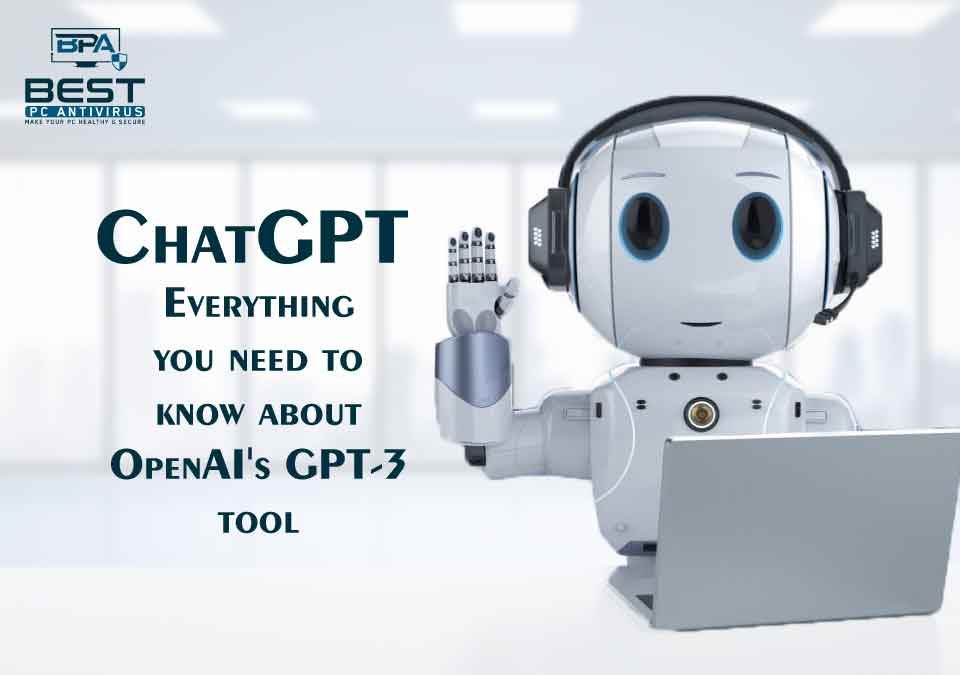I don’t know about you but my Facebook groups and Twitter feed have been flooding with the ultimate love and appreciation for ChatGPT. I was pretty impressed by everything that I read about this new AI-buzz-tool (if that’s a thing), and my fascination led to me doing some research, so I thought why not share it with you all.
So basically, ChatGPT is a large language model developed by OpenAI (goat for real) that has the ability to generate human-like text. The model is based on the GPT-3 architecture, which stands for Generative Pre-trained Transformer 3. GPT-3 is the latest and most advanced version of the GPT series, and it has received significant attention in the field of natural language processing. In this blog post, we will discuss everything you need to know about GPT-3, including its story background, key features, applications, limitations, and future potential.
Ready for the adventure? Let’s dive right in…
What is GPT-3?
GPT-3 is a language generation tool that uses a neural network to generate text. It is capable of understanding context and generating text that is similar to human-written text. GPT-3 is considered to be the largest and most advanced language model to date, with 175 billion parameters. This size and complexity allow GPT-3 to perform multiple tasks, such as language translation, question answering, and summarization, with high accuracy.
Compared to previous versions of GPT, GPT-3 has shown significant improvements in its ability to understand and generate text. Additionally, GPT-3’s performance is comparable to other state-of-the-art language generation tools such as BERT and T5, it’s incredible!
What is the Objective of ChatGPT?
The main objective of ChatGPT is to generate human-like text that is coherent, consistent, and relevant to the given input. This is achieved by training the model on a large amount of text data, which allows it to understand the context of the input and generate text that is similar to human-written text.
Another objective of ChatGPT is to perform multiple tasks, such as language translation, question answering, and summarization, with high accuracy. The model’s ability to understand the context and generate human-like text makes it suitable for these tasks.
The objective of ChatGPT is also to make it available as an API, which allows developers to access the model’s capabilities and integrate them into their applications. This makes it easy for developers to use the model’s capabilities to improve the performance of their applications and services.
How and Where to get ChatGPT?
There are several ways to get access to ChatGPT:
- OpenAI API: OpenAI, the organization behind ChatGPT, provides an API that allows developers to access the model’s capabilities and integrate them into their applications. Developers can sign up for an API key on the OpenAI website and use it to make requests to the API.
- Pre-trained models: OpenAI also provides pre-trained models of ChatGPT that can be downloaded and used for various natural language processing tasks. These pre-trained models can be fine-tuned on specific datasets to improve their performance on specific tasks.
- Third-party services: There are also third-party services that provide access to ChatGPT or GPT-3, such as Hugging Face, Copy.ai, and more. These services offer pre-trained models, fine-tuning options, and other features to make it easy for developers to use the model’s capabilities in their applications.
- Research: ChatGPT is also available for research purposes, and it can be used by researchers to run experiments on natural language processing and other related fields.
Overall, ChatGPT is widely available through the OpenAI API, pre-trained models, and third-party services, making it easy for developers to access and use its capabilities in their applications.
Key Features and Applications of ChatGPT
GPT-3 is a powerful tool that has several key features that make it a versatile and useful tool for various industries and applications. Its ability to understand context allows it to generate text that is coherent, consistent, and relevant to the given input. This makes it suitable for various tasks such as language translation, question answering, and summarization. FYI, I have tried each of these and I’m so, so impressed!
But one of the most significant applications of GPT-3 is in the field of natural language processing. The model can be used to improve the performance of chatbots, language translation systems, and other natural language processing applications. The human-like text generation capabilities of GPT-3 can make chatbots and virtual assistants more natural and engaging to interact with. Additionally, GPT-3 can be fine-tuned for specific languages and dialects, which makes it a powerful tool for language translation.
Another significant application of GPT-3 is content generation. The model can be used to generate high-quality, unique and engaging content for various industries such as marketing, advertising, and journalism. The model can be fine-tuned for specific industries, which allows it to generate text in a specific style or tone. This can save time and effort for content creators and marketers while improving the quality of the content, which I need to try out ASAP!
Also, I’m hearing that several companies and organizations have already started using GPT-3 in their products and services. OpenAI has released an API for GPT-3, which allows developers to access the model’s capabilities and integrate them into their applications. Other companies such as Copy.ai and Hugging Face have also released products and services that use GPT-3, such as automated content creation, language translation, and more.
Overall, GPT-3’s ability to understand context, generate human-like text, and perform multiple tasks make it a powerful tool for natural language processing, content generation, and other industries. As a result, it has a wide range of potential applications and is being used by various companies and organizations to improve their products and services.
Quick Recap of the Key Features of ChatGPT
- Language Generation: ChatGPT is capable of generating human-like text in a wide range of languages and styles.
- Understanding Context: ChatGPT has the ability to understand the context of a given text, which allows it to generate text that is relevant and appropriate.
- Multi-task Learning: ChatGPT can perform multiple tasks such as language translation, summarization, question answering, and more.
- Large Model: ChatGPT is based on the GPT-3 architecture, which is one of the largest language models, with 175 billion parameters.
- Pre-trained: ChatGPT is pre-trained on a large dataset, which allows it to generate text with high accuracy.
- Fine-tuning: ChatGPT can be fine-tuned on specific datasets to improve its performance on specific tasks.
- OpenAI API: ChatGPT is also available as an API, which allows developers to easily integrate its capabilities into their applications.
- Language Support: ChatGPT supports multiple languages and can be fine-tuned for specific languages.
- Low Latency: ChatGPT is designed to provide a low-latency response, making it suitable for real-time applications.
- Robustness: ChatGPT can handle a wide range of text inputs and generate coherent, consistent and grammatically correct text.
- Customization: ChatGPT can be fine-tuned to adapt to specific use cases, and can be configured to generate text in a specific style or tone.
Limitations of ChatGPT
GPT-3, like any machine learning model, has its own set of limitations and challenges.
One limitation of GPT-3 is its reliance on a large amount of data. The model is trained on a massive amount of text data, which allows it to generate human-like text. However, this also means that the model may not perform well when dealing with limited or specialized data sets.
Another limitation of GPT-3 is its potential for bias. The model is trained on text data from the internet, which may contain biases and stereotypes. This can lead to the model generating text that is biased or discriminatory.
There are also ethical considerations with GPT-3 such as the potential for misuse of the model’s capabilities. For example, the model’s ability to generate human-like text could be used to create fake news or impersonate individuals online.
OpenAI is aware of these limitations and challenges and is taking steps to address them. For example, the company has implemented a review process for its API to ensure that users are using GPT-3 in a responsible manner. OpenAI is also actively researching ways to reduce bias in the model’s training data and improve its performance on specialized data sets. Additionally, the company is encouraging responsible and ethical use of GPT-3 through the development of guidelines and best practices for using the model.
What is the Future of ChatGPT?
The future of ChatGPT, as well as its parent model GPT-3, is likely to see continued advancements and improvements in its capabilities and performance. As the model’s architecture and training data are refined, it is expected that GPT-3 will become even better at understanding context and generating human-like text.
One area that is expected to see significant advancements is in the field of natural language processing, where GPT-3 is already being used to improve the performance of chatbots, language translation systems, and other natural language processing applications. With continued development, GPT-3 is likely to become an increasingly powerful tool for these applications.
Another area where GPT-3 is expected to have a significant impact is content generation. The model’s ability to generate high-quality, unique, and engaging content can save time and effort for content creators and marketers while improving the quality of the content.
Additionally, GPT-3 is likely to be used in other industries such as finance, healthcare, and so much more.
So yeah, ChatGPT has the ability to understand the context and generate human-like text. Its ability to perform multiple tasks, such as language translation, question answering, and summarization, with high accuracy makes it a useful tool for various industries and applications. You can totally expect to see continued advancements and improvements in its capabilities and performance.
ChatGPT is a fantastic tool that has the potential to revolutionize the field of natural language processing and other industries. As its capabilities and performance continue to improve, it is likely to become an even more valuable tool for developers and organizations.
Read More :- Ways to Reduce Rising Email Based Threats and Uphold Better Data Security




